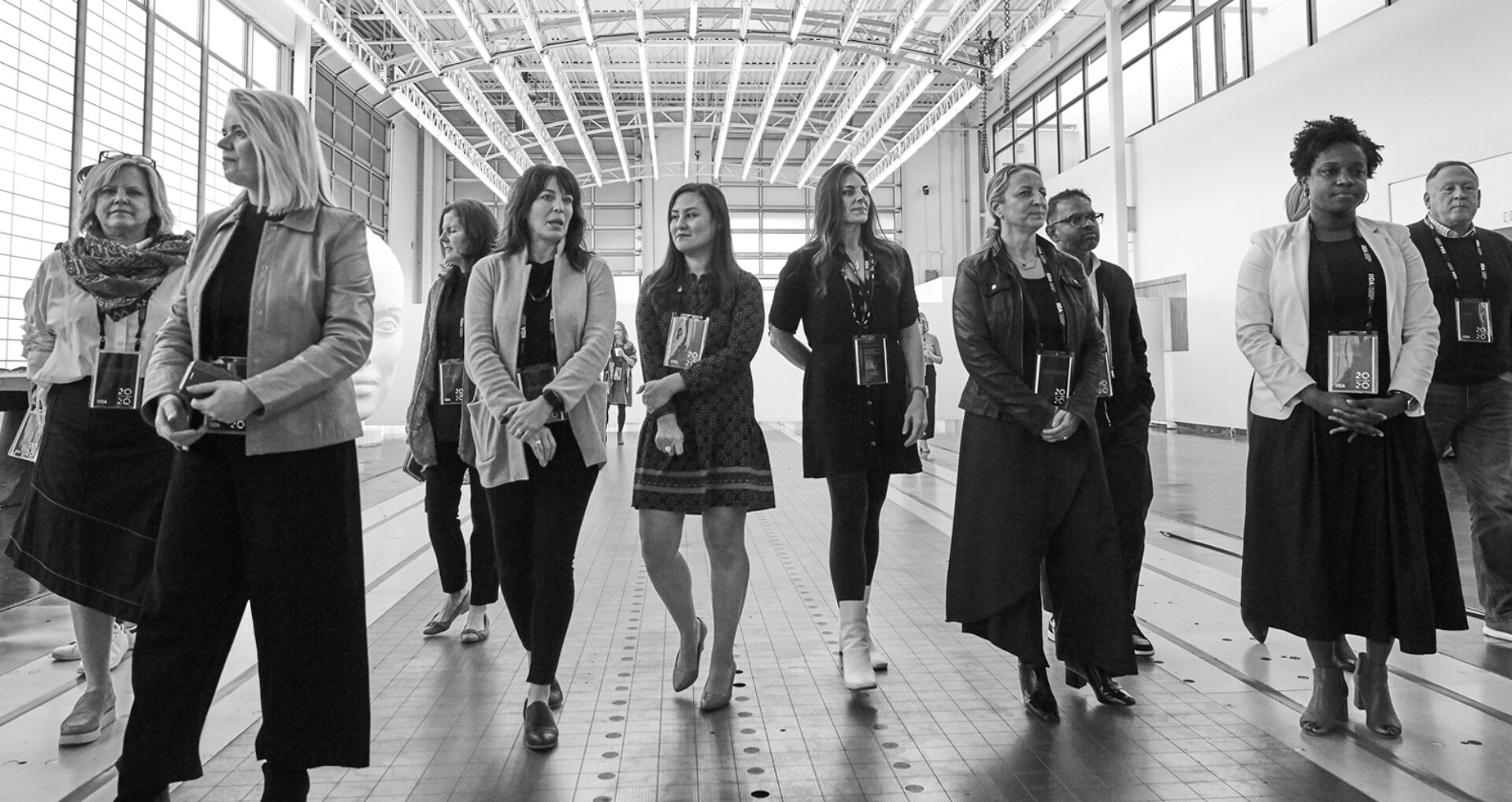The following is an excerpt from IIDA’s annual Industry Roundtable report, Industry Roundtable 23: The Future of Place, Experience, and Worklife. The roundtable took place at BMW Designworks in California. Read the full report here.
My prediction for 2050? That women leaders in the design world will triple.
Gabrielle Bullock, IIDA, FAIA, NOMA, Perkins and Will
While the design industry still struggles with diversity, progress has been made in recent years, and leading practitioners and manufacturers are deeply committed to the goal of inclusivity—both within their own organizations and with respect to the end-user for whom they are designing. Current efforts to diversify the talent pipeline ensure a more equitable future.
The profession will look very different in the coming decades, more reflective of the world at large. The design ecosystem will encompass a greater diversity of practitioners, collaborators, and partners and a wider range of ages and gender identities, as well as a broader cultural and racial makeup. (This will make for an intriguing Industry Roundtable: “In 2050, the age range around this table will span 80 years; some will attend via hologram; everyone will speak in their native language and the audience will hear it in theirs, whether attending remotely or in-person,” Ryan Menke, Ind. IIDA, senior vice president of sales and marketing at OFS presages.) The industry will become more inclusive by default, but also by intention, as designers advocate and agitate for systemic shifts. “For instance, space and local/international codes can work together to support a growing community of gender nonbinary individuals,” explains Mavis Wiggins, Assoc. IIDA, managing executive of TPG Architecture.
Multidisciplinary design professionals and firms with expertise and backgrounds in other fields are likely to disrupt our industry, which will be even better equipped to solve the complex, multimodal problems of tomorrow. “In thirty years,” James Kerrigan, FIIDA, design principal of interiors at Jacobs predicts, “BMW will be here speaking about how they got into the design space by applying their production and supply chain know-how to overturn traditional construction approaches, delivering high-tech, sustainable, and beautiful design solutions for interior and exterior applications.”
For now, inclusivity looks different at every firm, and so do the specific impediments to achieving it. As an example, Landscape Forms is currently endeavoring to make two very different populaces feel equally included under one roof. “Our production staff and our office teams are antitheses of each other, and here we are asking them to work together,” Kirt Martin, vice president of Capitol One says.
Design, particularly of office amenities, has played a role in bridging that gap, he explains. So has giving employees as much choice as possible about when, how, and where they work. For Netflix, an impetus for addressing inclusion is the network’s penetration into previously unexplored external markets—“countries that haven’t yet experienced content the way we do, and from whom we’re learning a lot,” says Elizabeth Christopher, design manager at Netflix.
Design leaders are seizing opportunities to better narrate the stories of those who are oft-overlooked or excluded in our spaces and our culture. “In order to design a better world, we need to unpack the missing data: the missing stories of the people we purportedly design for,” says Angie Lee, IIDA, AIA, partner and design director of interiors at FXCollaborative. Being inclusive also means considering vulnerable and under-resourced populaces, and being proactive about designing solutions for them, whether or not we’re hired by clients to do so. “What matters now is designing for social equity and affordable living,” says Martin. The industry will be challenged and emboldened to address pressing issues like urban density, overpopulation, and the housing crisis, and to help climate refugees. “Equality and justice for women and minorities will positively change our built environment,” concludes Diana Farmer-Gonzalez, IIDA, Assoc. AIA, principal and co-managing director of Gensler's Miami office.
